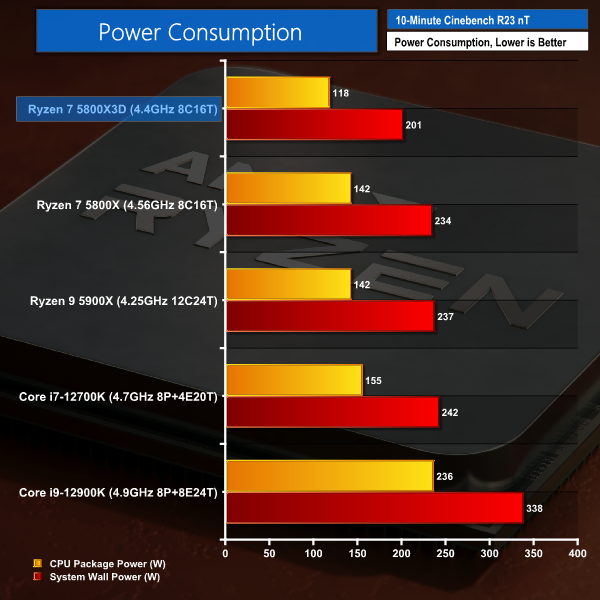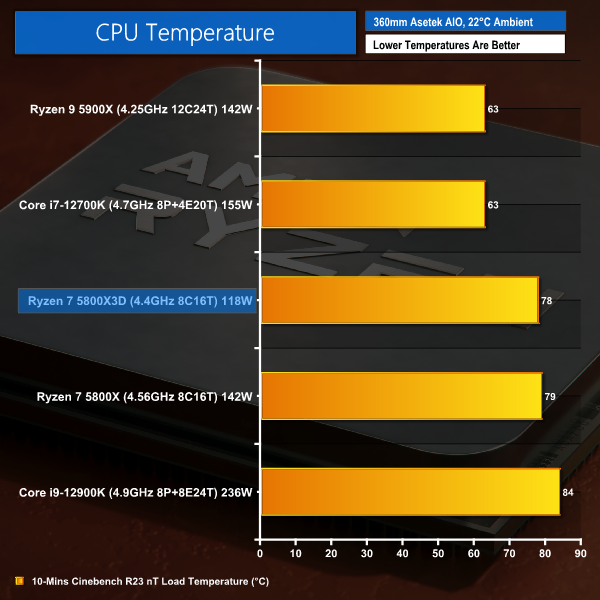For CPU load results, we read the power draw after running 10 minutes of the Cinebench R23 nT all-core rendering test. The same test parameters are used for temperature readings.
The power consumption of our entire test system (at the wall) is shown in the chart. We also include the reported CPU Package Power.
Power Consumption
Power draw readings are accurate to around +/-2-4W under heavy load due to instantaneous fluctuations in the value. We use a Titanium-rated Seasonic 1000W Prime PSU.
Modest power consumption is what we have come to expect from AMD’s Zen 3 architecture, and the Ryzen 7 5800X3D delivers just that.
Running at lower voltage than the Ryzen 7 5800X, the 5800X3D at least somewhat makes up for its clock speed and performance deficit by drawing less energy. This, in turn, reduces the cooling requirements for the chip, so that’s at least some positive outcome from the reduction in productivity performance.
Compared to the Intel chips, AMD’s power usage advantage with the TSMC 7nm process node is clear to see, even with a 64MB L3 Cache die added into the equation. The Ryzen 7 5800X3D sample in our test setup has a reported package power exactly half that of the Core i9-12900K. Needless to say, the Intel 12th Gen part did not deliver double the performance in productivity tasks and was even marginally slower in our gaming tests.
AMD’s power efficiency remains strong.
Temperatures
Temperature recordings were taken using 360mm Asetek AIO CPU cooler. Ambient temperatures were around 22°C.
Despite its modest power usage, the eight-core Zen 3 chip continues to be a hot runner. Even with a 360mm AIO liquid cooler, we saw temperature readings close to the 80C mark under an extended rendering workload.
In essence, the 118W of power usage makes the Ryzen 7 5800X3D relatively easy for a CPU cooler to handle. But the high chiplet thermal density and hot operating nature of AMD’s processor means that you should not expect to see low running temperatures.
What is positive to see is that the added cache die and structural silicon do not look to have introduced any major cooling challenges when the 5800X3D is put under a CPU cooler commensurate of the processor’s market positioning.
Be sure to check out our sponsors store EKWB here
 KitGuru KitGuru.net – Tech News | Hardware News | Hardware Reviews | IOS | Mobile | Gaming | Graphics Cards
KitGuru KitGuru.net – Tech News | Hardware News | Hardware Reviews | IOS | Mobile | Gaming | Graphics Cards




